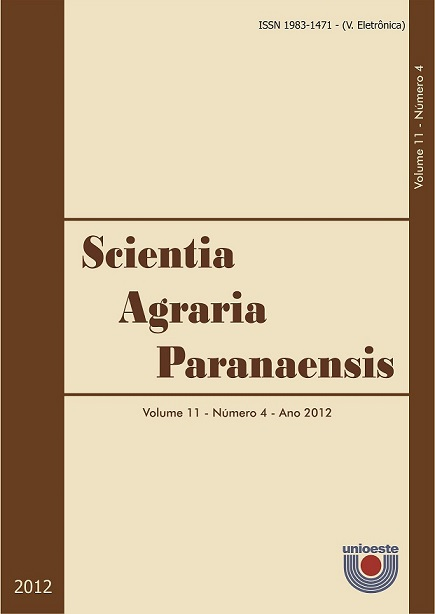Soil phytoremediation using Crotalaria spectabilis for cadmium and lead removal
DOI:
https://doi.org/10.18188/sap.v11i4.5720Keywords:
fitoextração, metais pesados tóxicos, poluiçãoAbstract
Phytoremediation is an important technique used in soil and water decontamination, as being used in the removal, containment and reduction of heavy metals and organic compounds. This essay aims to evaluate the efficiency of Crotalaria spectabilis on phytoremediation of soils contaminated by the toxic heavy metals Cd and Pb. The used borderline was completely randomized: five dosages with four repetitions. The treatments utilized were “control”, “prevention level Cd 1.3 mg kg-1”, “intervention level Cd 3.0 mg kg-1”, “prevention level Pb 72 mg kg-1” and “intervention level Pb 180 mg kg-1”. The plants were kept in soil for 90 days, and the quantification of Pb and Cd metal dosage in its dry biomass was made through spectrophotometry of atomic absorption, “flame” mode. The plants had high rate of survival in contaminated soil by Cd and Pb with reductions on growth and production of dry biomass. All the treatments have shown Pb contents in dry biomass of the plant aerial part. For Cd metal, dry biomass dosages were not found. It is concluded that C. spectabilis is able to store the heavy metal Pb in vegetable tissue of the aerial part, being potentially able to be used as phytoremediation of areas contaminated by these metals.
Downloads
Published
How to Cite
Issue
Section
License
Aviso de Direito Autoral Creative Commons
Política para Periódicos de Acesso Livre
Autores que publicam nesta revista concordam com os seguintes termos:
1. Autores mantém os direitos autorais e concedem à revista o direito de primeira publicação, com o trabalho simultaneamente licenciado sob a Licença Creative Commons Attribution que permite o compartilhamento do trabalho com reconhecimento da autoria e publicação inicial nesta revista.2. Autores têm autorização para assumir contratos adicionais separadamente, para distribuição não-exclusiva da versão do trabalho publicada nesta revista (ex.: publicar em repositório institucional ou como capítulo de livro), com reconhecimento de autoria e publicação inicial nesta revista.
3. Autores têm permissão e são estimulados a publicar e distribuir seu trabalho online (ex.: em repositórios institucionais ou na sua página pessoal) a qualquer ponto antes ou durante o processo editorial, já que isso pode gerar alterações produtivas, bem como aumentar o impacto e a citação do trabalho publicado (Veja O Efeito do Acesso Livre).
Licença Creative Commons
Esta obra está licenciada com uma Licença Creative Commons Atribuição-NãoComercial-CompartilhaIgual 4.0 Internacional, o que permite compartilhar, copiar, distribuir, exibir, reproduzir, a totalidade ou partes desde que não tenha objetivo comercial e sejam citados os autores e a fonte.


